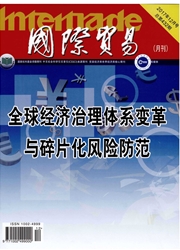

 中文摘要:
中文摘要:
国际金融危机爆发后,发达国家加大对战略性新兴产业的扶持力度,全球新能源产业规模急剧扩大。从世界范围来看,新能源产业发展起步较晚,但国际分工起点较高,要素配置国际化进程较快。同时,各国政府在新能源产业价值链分布以及国际竞争格局演化中扮演着重要角色。然而,由于新能源技术路线、行业组织结构以及全球能源格局仍存在不确定性.新能源产业的国际分工机理和模式尚未完全明朗。近年来,我盯新能源产业扩张集中在价值链的中下游环节.虽然制造成本、生产组织、国际市场份额等方面具备了一定的竞争力,但竞争力主要表现为规模和成本优势。核心技术研发、技术标准制定、国内市场培育等方面仍有差距,导致我国新能源产业参与国际分工仍延续“两头在外”的模式,尚未形成完整的产业链条,分工收益受到挤压。为此,应创新新能源产业发展的理念和模式,加快形成多方位、多层次、国际化的产业发展体系。
 英文摘要:
英文摘要:
Since the international financial crisis, the new energy industry has expanded speedily with more support by the governments of developed countries. From worldwide, the new energy industry developed late, but with high requirements of international division, and the internationalization progress of factor allocation is fast. Besides, government of each country always plays an important role in renewable sector by various subsidies and investment. Since there still remain some uncertainties in technology roadmap and business mode, the mechanism and pattern of international division of labor in new energy industry is not yet fully clear. Expansion of China's new energy industry in recent years mainly focused on the middle and lower part of the value chain. Although becoming more competitive in manufacturing costs, production organization and international market share, its competitiveness still lies in the scale and cost advantages while lack of the core competencies As a result China's new energy industry continues to participate international division of labor by "two-out" mode with incomplete value chain and benefits being squeezed. Therefore, it calls for the Chinese government to put more efforts on policy-making so as to improve international competitiveness of new energy industry.
 同期刊论文项目
同期刊论文项目
 同项目期刊论文
同项目期刊论文
 期刊信息
期刊信息
